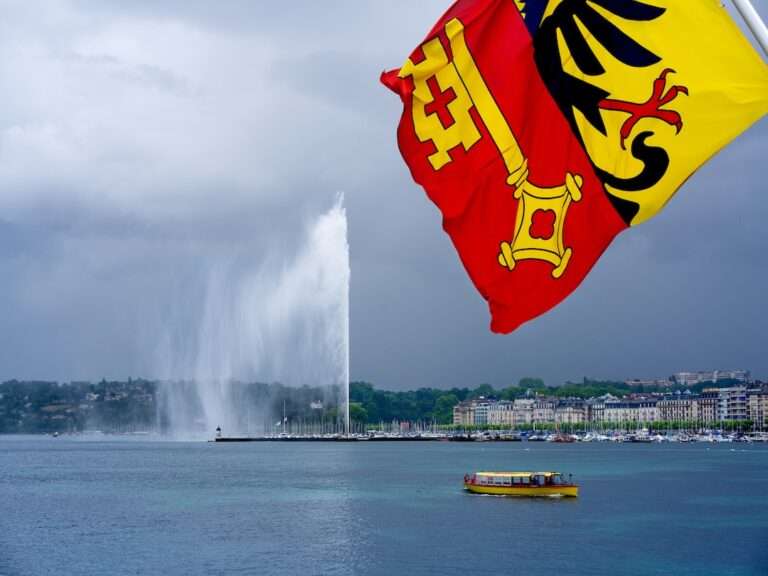The Hidden Secrets of Color Symbolism

Color symbolism is the use of colors to represent ideas, emotions, and concepts. It is a powerful tool that has been used by humans for centuries to communicate and convey meaning. From the vibrant red of love and passion to the calming blue of tranquility, colors have the ability to evoke strong emotions and create a lasting impact on our psyche.
Color symbolism plays a significant role in our daily lives, whether we realize it or not. It influences our choices in fashion, interior design, and even the food we eat. For example, we often associate green with nature and freshness, which is why many health food brands use this color in their packaging. Similarly, the color red is often associated with excitement and urgency, which is why it is commonly used in sale signs and advertisements.
The Psychology of Color: How Colors Influence Our Emotions
Colors have a profound impact on our mood and emotions. They have the ability to stimulate our senses and evoke specific feelings. For example, warm colors like red, orange, and yellow are often associated with energy, passion, and happiness. These colors can make us feel more alert and excited.
On the other hand, cool colors like blue, green, and purple are often associated with calmness, tranquility, and relaxation. These colors can help us feel more at ease and peaceful. This is why many hospitals and healthcare facilities use shades of blue and green in their interiors to create a soothing environment for patients.
Different colors can also evoke different cultural associations and meanings. For example, in Western cultures, white is often associated with purity and innocence, while in some Eastern cultures it is associated with mourning and death. This shows that color symbolism can vary across different cultures and societies.
The History of Color Symbolism: From Ancient Times to Modern Day
Color symbolism has a rich history that dates back to ancient times. In ancient Egypt, for example, the color blue was associated with the sky and the Nile River, symbolizing life and fertility. In ancient Greece, red was associated with power and strength, while yellow was associated with divinity and royalty.
Throughout history, color symbolism has evolved and changed. In the Middle Ages, for example, purple became associated with royalty and wealth because it was a rare and expensive dye to produce. In the Renaissance period, artists began using color symbolism in their paintings to convey deeper meanings and emotions.
In modern times, color symbolism continues to play a significant role in our society. We see it in advertising, branding, and even political campaigns. For example, the color red is often used in political campaigns to evoke feelings of power and strength, while blue is used to convey trust and reliability.
Color Symbolism in Different Cultures: A Global Perspective
Color symbolism varies across different cultures and societies. In Western cultures, for example, white is often associated with purity and innocence, while black is associated with death and mourning. In Eastern cultures, however, white is often associated with death and mourning, while black is seen as a color of power and authority.
In some cultures, certain colors have specific meanings and associations. For example, in Chinese culture, red is considered a lucky color that symbolizes good fortune and happiness. It is often used in celebrations such as weddings and New Year’s festivities.
Similarly, in Indian culture, different colors are associated with different deities and have specific meanings. For example, red is associated with the goddess Durga and symbolizes power and protection, while yellow is associated with the god Vishnu and symbolizes knowledge and learning.
The Hidden Meanings of Primary Colors: Red, Blue, and Yellow
Primary colors – red, blue, and yellow – have deep symbolic meanings that have been ingrained in our culture for centuries. Red is often associated with passion, love, and energy. It can evoke feelings of excitement and intensity. Blue, on the other hand, is associated with calmness, tranquility, and trust. It can create a sense of peace and relaxation. Yellow is often associated with happiness, joy, and optimism. It can evoke feelings of warmth and positivity.
These primary colors are used in various contexts to convey different messages. In advertising, for example, red is often used to grab attention and create a sense of urgency. Blue is commonly used in branding to convey trust and reliability. Yellow is often used to create a sense of happiness and positivity.
The Symbolism of Secondary Colors: Green, Purple, and Orange

Secondary colors – green, purple, and orange – also have symbolic meanings that can evoke specific emotions and associations. Green is often associated with nature, growth, and freshness. It can create a sense of harmony and balance. Purple is associated with royalty, luxury, and spirituality. It can evoke feelings of creativity and mystery. Orange is often associated with energy, enthusiasm, and warmth. It can create a sense of excitement and enthusiasm.
These secondary colors are used in various contexts to convey different messages. In interior design, for example, green is often used to create a calming and soothing environment. Purple is commonly used in luxury branding to convey elegance and sophistication. Orange is often used in advertising to create a sense of energy and excitement.
Shades and Tones: How Different Hues Convey Different Meanings
Different shades and tones of colors can convey different meanings and associations. For example, a light shade of blue may evoke feelings of tranquility and calmness, while a dark shade of blue may evoke feelings of sadness or melancholy.
Similarly, a bright shade of red may evoke feelings of passion and intensity, while a muted shade of red may evoke feelings of warmth or comfort.
Different hues of colors can also have cultural associations and meanings. For example, in Western cultures, a light shade of pink is often associated with femininity and sweetness, while in some Eastern cultures it is associated with luck and prosperity.
Color Symbolism in Art and Literature: Examples and Interpretations
Color symbolism has long been used in art and literature to convey deeper meanings and emotions. Artists use colors to evoke specific feelings and create a certain mood or atmosphere in their works. For example, Vincent van Gogh often used vibrant shades of yellow in his paintings to convey feelings of happiness and optimism.
In literature, authors use color symbolism to enhance their storytelling and create a more immersive experience for the reader. For example, F. Scott Fitzgerald uses the color green in “The Great Gatsby” to symbolize wealth and the American Dream.
Color Symbolism in Marketing: How Brands Use Color to Influence Consumers
Brands use color to influence consumer behavior and create a certain perception of their products or services. Different industries use different colors to convey different messages. For example, fast-food chains often use red and yellow in their branding to create a sense of urgency and excitement.
Similarly, luxury brands often use black and gold in their branding to convey elegance and sophistication. Technology companies often use blue in their branding to convey trust and reliability.
Colors can also influence our purchasing decisions. Studies have shown that people are more likely to buy a product if it is presented in their favorite color. This is why brands spend a significant amount of time and resources on choosing the right colors for their branding and packaging.
The Enduring Importance of Color Symbolism in Our Lives
Color symbolism plays a significant role in our daily lives, whether we realize it or not. It influences our emotions, perceptions, and even our purchasing decisions. From the calming blue of the ocean to the vibrant red of a rose, colors have the power to evoke strong emotions and create a lasting impact on our psyche.
Understanding color symbolism can help us better understand ourselves and the world around us. It can help us make more informed choices in our daily lives and create a more meaningful and intentional environment.
In conclusion, color symbolism is a powerful tool that has been used by humans for centuries to communicate and convey meaning. It influences our emotions, perceptions, and even our purchasing decisions. Whether it is in art, literature, marketing, or everyday life, colors have the ability to evoke strong emotions and create a lasting impact on our psyche. Understanding color symbolism can help us better understand ourselves and the world around us, and create a more meaningful and intentional environment.
If you’re fascinated by the hidden meanings behind symbols, you might also be interested in exploring the symbolism of the moon. The moon has long been associated with various interpretations and holds significant symbolism in different cultures and belief systems. From representing femininity and intuition to cycles of life and emotions, the moon’s symbolism is rich and diverse. To delve deeper into this topic, check out this insightful article on What Does the Moon Symbolize?
FAQs
What is color symbolism?
Color symbolism is the use of colors to represent ideas, emotions, and concepts. It is a form of communication that has been used in art, literature, and culture throughout history.
What are some common color associations?
Some common color associations include red for passion or danger, blue for calmness or sadness, green for nature or envy, yellow for happiness or caution, and black for death or mourning. However, color associations can vary depending on culture and context.
How does color symbolism affect our emotions?
Color symbolism can affect our emotions by triggering certain associations and feelings. For example, the color red can evoke feelings of passion or danger, while the color blue can evoke feelings of calmness or sadness.
What are some examples of color symbolism in art and literature?
Examples of color symbolism in art and literature include the use of yellow to represent cowardice in “The Wizard of Oz,” the use of red to represent love and passion in “Romeo and Juliet,” and the use of green to represent envy in “Othello.”
How does color symbolism vary across cultures?
Color symbolism can vary across cultures, as different cultures may have different associations and meanings for certain colors. For example, in Western cultures, white is often associated with purity and innocence, while in some Eastern cultures, white is associated with death and mourning.





